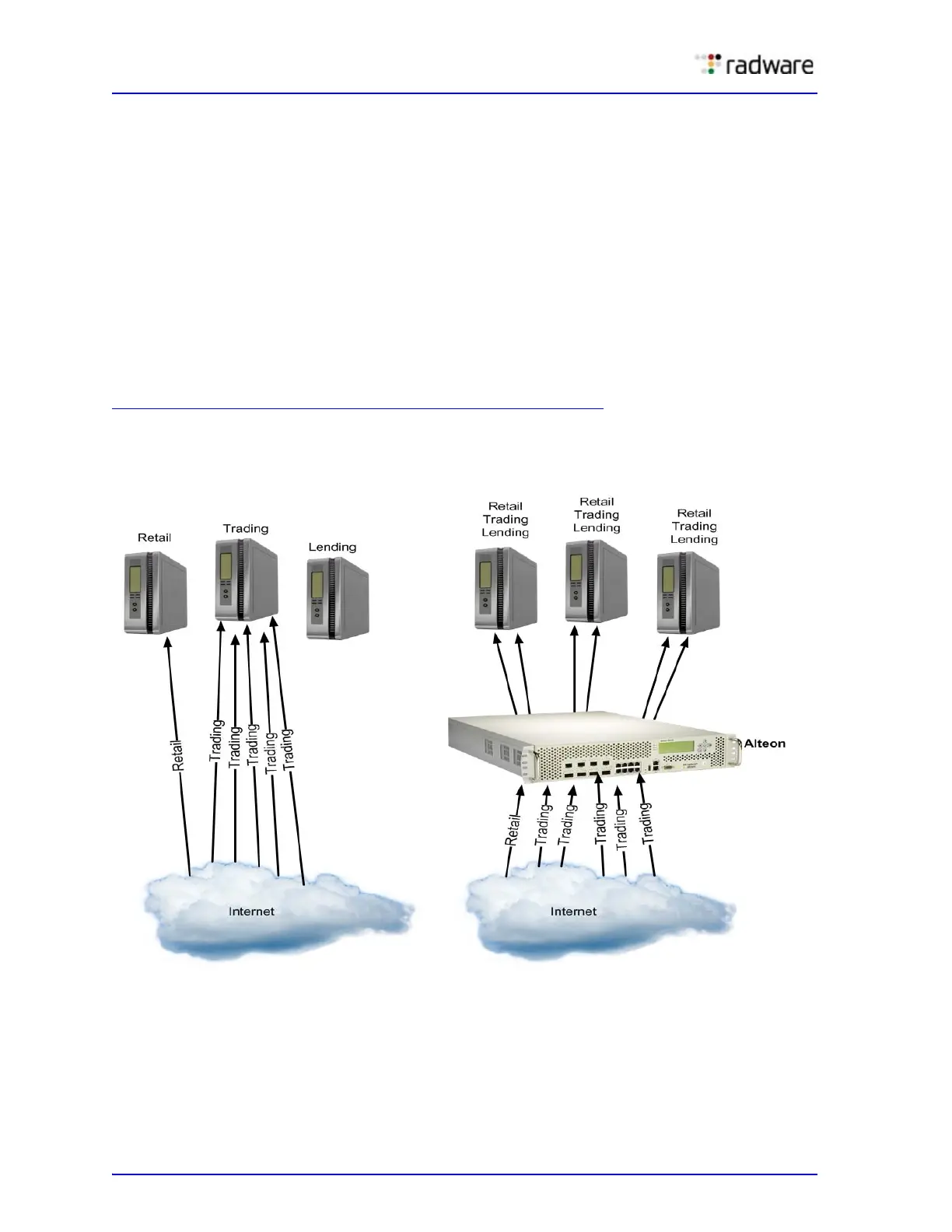Alteon Application Switch Operating System Application Guide
Server Load Balancing
166 Document ID: RDWR-ALOS-V2900_AG1302
• You must be able to scale your applications to meet client and LAN request capacity.
• You cannot afford to continue using a less effective load-balancing technique, such as DNS
round-robin or a software-only system.
How Server Load Balancing Works
In an average network that employs multiple servers without SLB, each server usually specializes in
providing one or two unique services. If one of these servers provides access to applications or data
that is in high demand, it can become overused. Placing this kind of strain on a server can decrease
the performance of the entire network as user requests are rejected by the server and then
resubmitted by the user stations. Ironically, overuse of key servers often happens in networks where
other servers are actually available.
The solution to getting the most from your servers is SLB. With this software feature, Alteon is
aware of the services provided by each server. Alteon can direct user session traffic to an
appropriate server, based on a variety of load-balancing algorithms.
Figure 25 - Traditional Versus SLB Network Configurations, page 166
illustrates traditional versus
SLB network configurations:
Figure 25: Traditional Versus SLB Network Configurations
To provide load balancing for any particular type of service, each server in the pool must have
access to identical content, either directly (duplicated on each server) or through a back-end
network (mounting the same file system or database server).

